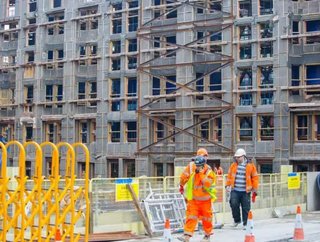Portfolio funding - litigation in the construction sector

Third party funding has been a part of the disputes landscape for many years, however there has been little evolution or innovation in the market. Traditional third party funding, where an investor funds or part-funds a client’s dispute for a return of any damages received, is not geared towards serving corporate clients, particularly those in the construction industry, or repeat business. Traditional funding is also focused on single distressed situations which is why the pricing can be so high.
To date, construction companies have often not engaged in litigation funding as it is too expensive and the process too lengthy and cumbersome. In short, no construction company could ever choose to agree to traditional single case funding terms if they could afford to pay their legal fees themselves. Alternatively, if the situation is distressed and the company has no choice but to accept the hugely expensive terms, even then funders often dislike the risks associated with construction disputes, particularly those relating to quantum, enforcement and collection.
Many successful construction businesses have books containing numerous disputes including litigation, arbitration and adjudication. Funding just a single case does not solve the entire problem that the business is wrestling with. Offering funding (at a rate of 300% or more) for only the very best case does not solve the overarching issue of financing the disputes book.
The key for the business to obtain value is by moving away from one-off cases and instead focusing on portfolios of disputes. The book can include a complete range of cases including bringing and defending claims, local and international court and arbitration matters and those cases where quantum or collection risk would prevent funding on a single case basis. This unlocks and uses the value of the ‘good’ cases to allow the other cases to be run or defended.
From the funder’s point of view their interest is spread and cross-collateralised across all of the disputes. This reduction in risk means that the pricing can come down to a level that a corporate could consider attractive, starting as low as 20% on a non-recourse basis.
Taking investment in these assets (disputes) has many benefits for a construction company. These include taking the risk off balance sheet and addressing all of their litigation financing issues, not just the best cases. This approach also allows the company’s litigation budget to be spent in other ways, which has a significant positive impact to the valuation of the business (by removing the litigation spend from the budget) and allows the business to monetise an amount of the book value, giving them the opportunity to book that revenue into their accounts when they want it.
There are key elements that are crucial when looking at a portfolio approach. The first is really understanding the problem and what the construction company is trying to achieve, is it the financing of ongoing or nascent cases, raising finance against their contingent assets or a combination of both?
Often, the initial approach is with one case, the most pressing issue, but the important question is, ‘what else have we/you got?’. The immediate case is not usually the real problem that needs solving, but is likely to be the most difficult and expensive to resolve. It is important to look at the complete book, or at least a part of it to build a portfolio. This may include working with the company to see what disputes they have, or could have – almost an asset generation process.
The last element is the realisation and understanding that the investment does not have to relate directly to the security. Because of this, there are no specific financial products, but instead bespoke finance agreements that are specific to the particular business and their situation.
The construction market to date has been mostly overlooked by traditional funders, particularly in jurisdictions such as the Middle East or Africa. However, it is a sector that is perfectly positioned for the portfolio asset finance approach.
Often the issue is not a question of liability, it is instead one of cashflow. Taking a contractor example, investing into a contractor allows them to deal with subcontractor claims (for example paying legal fees to defend, coming to a standstill agreement, or indeed paying/settling) and securing the investment against the claim(s) against the employers, or against separate claims. As liquidity is becoming more and more of an issue in the construction industry, the option to monetise a percentage of the total value of the book should not be overlooked.
Construction companies are likely to have many claims in many different jurisdictions which are not being run. Restricted budgets, costs of defending claims and general liquidity issues prevent cases being run and encourage settlements at an undervalue. A better understanding of the available litigation financing options could make a significant difference to a construction business operating in challenging times.
The involvement of external financing also allows a second level of due diligence on the cases, the rebuttal of vastly reduced settlement offers, and allows for good lawyers to be running all the cases, both to defend and also to realise monies owed. These elements are particularly relevant to the construction industry, as recent events have highlighted.
Matthew Denney is the Managing Director of Chancery Capital.






